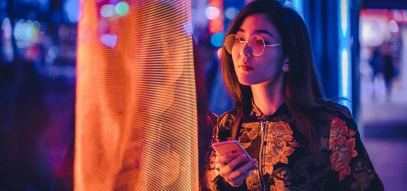China is home to the second largest consumer market in the world and is a key territory to both domestic and international brands. To learn more about recent shifts in buying behaviour among men and women across generations and cities in the wake of the pandemic, we conducted our latest study, ‘Chinese consumers in 2021: how priorities in lifestyle consumption are changing’, which revealed a shift away from material goods to more experiential spending. In this article, we take a closer look at the emerging habits of consumers and identify five ways in which priorities are changing.
Experiential spending is taking the lead
Experiential consumption is taking the lead as the top spending category, with nearly 70% of respondents spending ‘considerably’ on travel, food and nightlife. As the first country to emerge from the pandemic in 2021, China saw domestic tourism and food and beverage spending bounce back on a wave of pent-up demand.
Without many opportunities to travel overseas, most trips were taken locally, with 40% not exceeding three days and only 8% lasting more than a week. By the ‘May Day’ holiday in 2021, domestic tourism recovered to 103% of pre-pandemic levels. This level of recovery despite ongoing restrictions offers promise for further consumption in travel, food and nightlife ahead as demand is likely to continue to grow as restrictions ease and consumers have more opportunities to spend on experience.
Wellness is more important than ever
With physical and mental health at stake over the rise of Covid-19, the importance of wellness has been brought to light. In turn, it’s no surprise that physical and mental wellbeing spending surfaced as the second largest lifestyle spending category in 2021.
While this was the case for nearly all generations – except Generation Z, consumer preferences varied with age: Baby Boomers and Gen Xers were drawn to Traditional Chinese Medicine treatments (TCM), Millennials spent the most on sports and beauty services, and Gen Zers were keen on keeping slim.
Notably, sports clubs dominated male Millennial spending on wellness, with 75% indicating they work out at a sports club – an impressive number for an industry that only took off in 2008 following China’s successful bid to host the Olympics. At the time, spending per capita was relatively low, but as it has risen over the years, so too has consumer buy-in. It will serve as an important trend to follow over the next decade, notably within Gen Z and lower-tier cities who currently have distinctly lower purchasing power than older generations and first-tier cities.
Demand for luxury goods is stalling
The appetite for luxury goods is stalling: as new lifestyle patterns and categories diversify, a change in the consumption structure across generations emerges, and the pandemic carries on, spending on luxury has become less of a priority for some consumers.
In 2021, Gen X spent less on luxury goods and expressed plans to invest more on wellness activities, paving way for Millennials to emerge as the major luxury good purchasers, followed by Gen Z.
The importance of luxury consumption also varies across Chinese cities, with first-tier and new first-tier cities (for which GDP exceeds USD 300 billion and the population is greater than 15 million), considering it a higher priority and therefore spending more than second-tier cities (for which GDP is between USD 68 billion and USD 299 billion and the population ranges between three and 15 million inhabitants). In addition to a greater purchasing power, luxury consumers in higher tier cities pay more attention to a brand’s history, story and values, as found in our previous survey, Chinese luxury brand consumers - A generational, gender and city-tier analysis.
Although luxury goods ranked third both in consumption and increased spending over 2021, only 30% of respondents expressed willingness to buy more luxury goods in the next two years, with Baby Boomers showing the least interest in increasing their spending on luxury goods and Gen Z women significantly less willing to invest in this area than other age groups.
Product popularity is changing
Spending more time at home and living the ‘masked lifestyle’ during the pandemic has had a significant influence on the types of products consumers across all generations and genders have purchased.
Particularly, sales of perfume and cosmetics have declined while electronic products have become more popular than before – especially amongst Gen Zers: nearly 80% of Gen Z men purchased electronic products in the last year.
Yet, consistent with pre-pandemic levels, consumers in China have not lost their taste for clothing, shoes and hats, which continue to be the most common luxury goods purchased.
Pursuing opportunities for self-improvement is on the rise
With less time to participate in daily activities and interact with friends, colleagues and loved ones, the last two years have spurred a period of reflection that has impacted consumer spending. Not only are individuals longing for their pre-pandemic lifestyles, but they are also challenging themselves with opportunities of self-improvement.
Across all generations, individuals are seeking both formal and informal ways of self-betterment. Currently, the most popular training programmes are for vocational skills, personal hobbies, foreign languages, further education and taste development.
Gen Zers and Millenials – especially women, show the strongest desire to pursue further study in the next two years while Baby boomers seek to develop new tastes and Gen Xers are cultivating hobbies.
To get the full picture on Chinese consumer preferences in 2021, download our study below.




